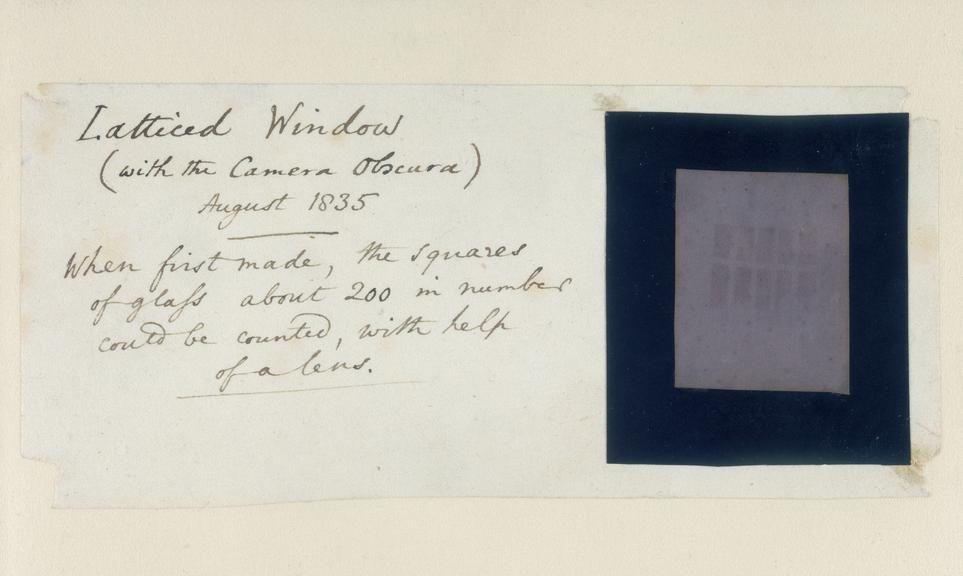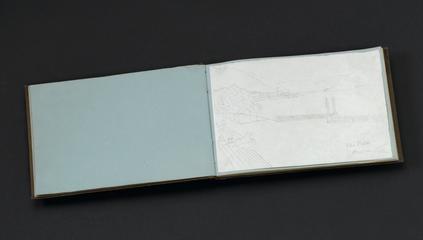
Windows From Inside South Gallery, Lacock Abbey
- Made:
- 1835-08 in Lacock Abbey
- maker:
- William Henry Fox Talbot

Oldest known surviving paper negative in existence dated August 1835. ' Windows from inside South Gallery, Lacock Abbey' , (made with the camera obscura), by William Henry Fox Talbot.
William Henry Fox Talbot (1800 -1877) is a key figure in the invention of photography. He established the basic principle of silver-based photography as a negative/positive process.
In 1834, Talbot invented a process which produced ‘negative’ images on light-sensitive paper. A negative could then be used to create multiple ‘positive’ photographs by contact printing. Taken in August 1835 The Latticed Window is the earliest known surviving photographic negative.
In September 1840 Talbot made a further breakthrough when he discovered that invisible, or 'latent', images were formed on sensitised paper after even relatively short exposures. These images could then be made visible, or 'developed', by further chemical treatment
Details
- Category:
- Photographs
- Collection:
- William Henry Fox Talbot Collection
- Object Number:
- 1937-361
- Materials:
- paper (fibre product)
- type:
- photograph and paper negative
- copyright:
- National Science and Media Museum
- credit:
- Matilda Talbot



